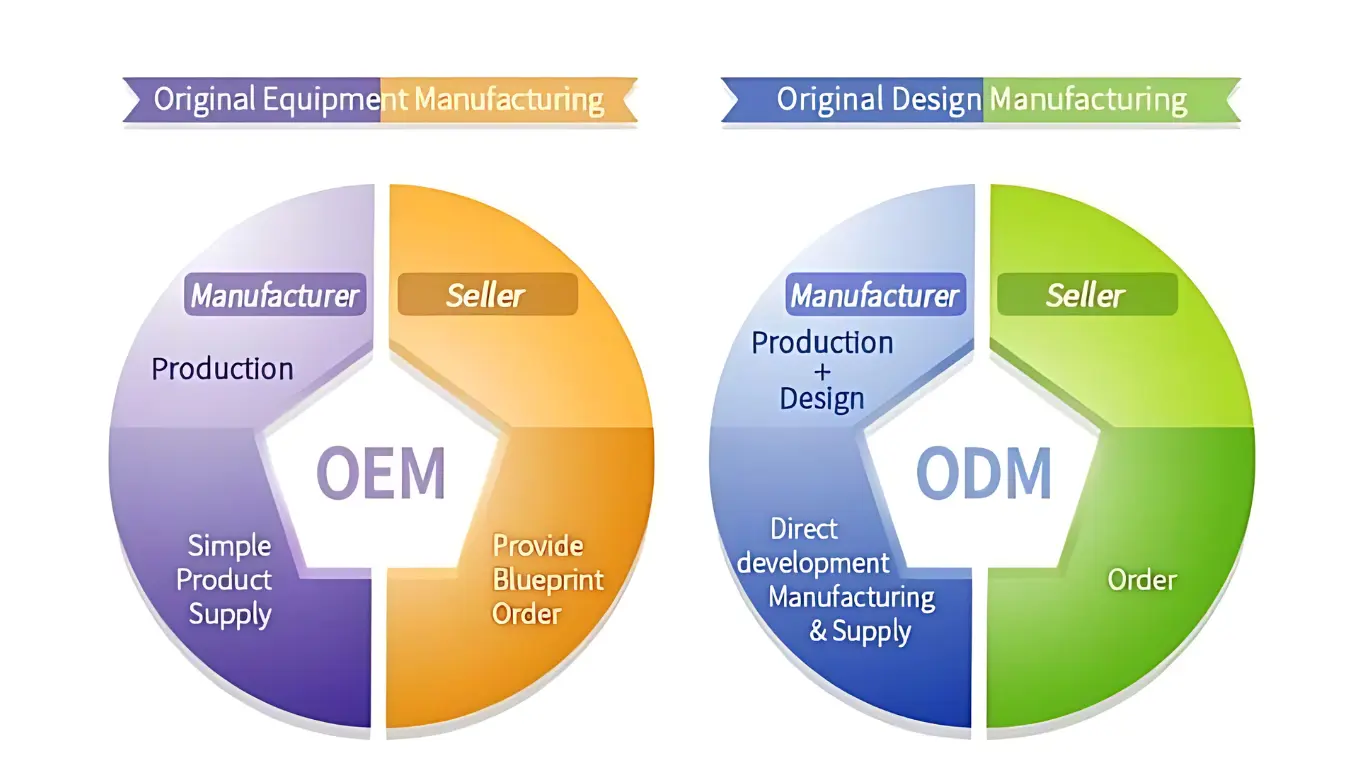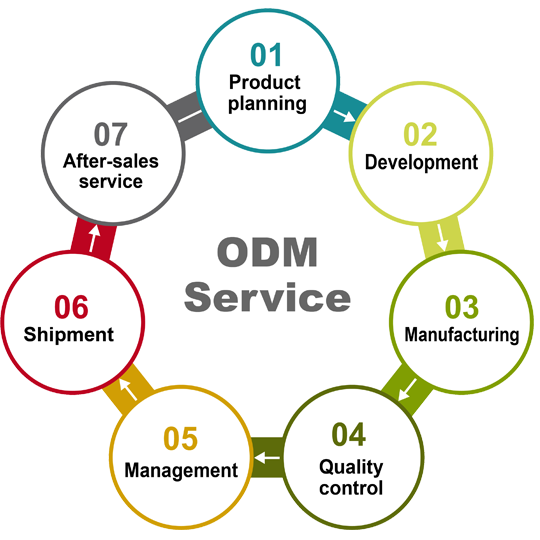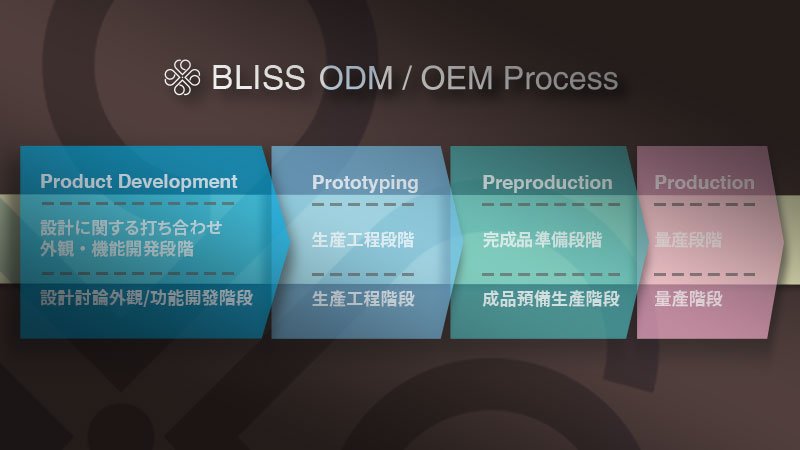In today’s competitive landscape, companies are continuously seeking ways to bring innovative products to the market efficiently and cost-effectively. Original Design Manufacturer (ODM) product development has emerged as a strategic approach that allows companies to leverage the expertise of specialized manufacturers in design, production, and supply chain management. By collaborating with ODMs, companies can focus on their core competencies while outsourcing the product development process to experienced partners.
ODM product development involves creating unique products based on specifications provided by a brand or company. This approach offers numerous advantages, including access to specialized design and engineering capabilities, streamlined manufacturing processes, and optimized supply chains. However, to ensure successful ODM product development, it’s crucial to adopt effective strategies that encompass various aspects of the process.

In this article, we will explore five essential strategies for effective ODM product development, spanning market research, design and development, manufacturing and supply chain optimization, marketing and distribution, and post-launch strategies. By incorporating these strategies, companies can enhance their chances of delivering successful ODM products that resonate with their target audience and remain competitive in the market.
Nội dung
I. ODM Product Development Service – Understanding the Market
The foundation of any successful product development process lies in a comprehensive understanding of the market landscape. By gaining insights into market trends, consumer preferences, and competitive dynamics, ODMs can tailor their products to meet the demands of their target audience effectively.

A. Market Research
Thorough market research is essential to identify market opportunities, understand consumer behavior, and analyze industry trends. This involves:
- Conducting market research: Gathering quantitative and qualitative data through various methods, such as surveys, focus groups, and secondary research, to gain insights into market size, growth potential, and customer needs.
- Analyzing competitors’ products and their strategies: Examining existing products, market positioning, and marketing campaigns of competitors to identify opportunities for differentiation and competitive advantage.
By conducting comprehensive market research, ODMs can uncover valuable insights that inform their product development strategies, ensuring their offerings align with market demands and stand out in a crowded marketplace.
B. Target Audience Analysis
Defining a clear target audience is crucial for developing products that cater to their specific needs and preferences. To achieve this, consider the following:
- Identifying the target audience demographics and psychographics: Gathering insights into age, gender, income, lifestyle, values, and motivations of the target audience through market research and customer segmentation.
- Understanding their needs, preferences, and pain points: Analyzing data collected from customer feedback, surveys, and market research to identify the target audience’s unmet needs, preferences, and challenges that the ODM product can address.
By gaining a deep understanding of the target audience, ODMs can develop products that resonate with their audience, addressing their specific requirements and delivering a compelling value proposition.
C. Value Proposition
A compelling value proposition is essential for differentiating ODM products in the market and capturing the attention of the target audience. To create an effective value proposition, consider the following:
- Creating a compelling value proposition that addresses the target audience’s needs: Crafting a clear and concise statement that highlights the unique benefits and value offered by the ODM product, addressing the identified needs and pain points of the target audience.
- Differentiating your ODM products from competitors in the market: Analyzing the strengths and weaknesses of competing products and identifying unique features, functionalities, or benefits that set your ODM product apart from the competition.
By developing a strong value proposition, ODMs can effectively communicate the unique value of their products to the target audience, positioning themselves as the preferred choice in the market.
II. Design and Development

The design and development phase is crucial for translating market insights and customer needs into tangible, innovative products. Effective strategies in this phase ensure that the ODM product not only meets functional requirements but also delivers an exceptional user experience.
A. Innovation and Creativity
Encouraging a culture of innovation and creativity within the development team is essential for developing products that stand out in the market. To foster innovation, consider the following:
- Encouraging a culture of innovation within the development team: Creating an environment that promotes creativity, collaboration, and open ideation, where team members feel empowered to explore new concepts and challenge traditional approaches.
- Exploring new technologies and design trends: Staying up-to-date with the latest technological advancements, design trends, and industry best practices, and incorporating them into the product development process to create unique and cutting-edge products.
By fostering an innovative mindset and embracing new ideas and technologies, ODMs can develop products that push the boundaries of what’s possible, delivering exceptional value and capturing the attention of their target audience.
B. Prototyping and Testing

Prototyping and testing are essential steps in the product development process, allowing ODMs to validate their designs, identify potential issues, and gather valuable feedback for iterative improvement.
- Developing prototypes: Creating physical or digital prototypes to test the feasibility and functionality of the product, as well as evaluate its usability and user experience.
- Conducting user testing and feedback collection: Engaging with the target audience and potential customers to gather feedback on the prototype, identifying areas for improvement, and validating the product’s alignment with their needs and preferences.
By iterating on the design based on user feedback and testing results, ODMs can refine their products, ensuring they meet the desired specifications and deliver a seamless user experience.
C. Agile Development
Adopting an agile development methodology can help ODMs adapt to changing market demands and rapidly incorporate feedback and insights throughout the product development process.
- Implementing agile development methodologies: Embracing agile principles, such as incremental development, continuous iteration, and cross-functional collaboration, to respond swiftly to changing requirements and customer feedback.
- Collaborating with cross-functional teams: Fostering collaboration between design, engineering, marketing, and other relevant teams to ensure seamless integration of diverse perspectives and expertise throughout the development process.
By embracing agile development practices, ODMs can enhance their ability to react to market changes, incorporate customer feedback, and deliver products that meet evolving customer needs and preferences.
III. Manufacturing and Supply Chain
Effective manufacturing and supply chain management are critical for ensuring the timely and cost-effective production of high-quality ODM products. Implementing strategies that optimize these processes can contribute significantly to the success of the product development initiative.
A. Supplier Relationship Management
Building strong relationships with reliable suppliers is essential for securing quality components and materials, as well as ensuring a stable and efficient supply chain.
- Building strong relationships with reliable suppliers: Identifying and partnering with reputable suppliers who can consistently deliver high-quality components and materials, adhering to agreed-upon standards and timelines.
- Negotiating favorable terms and contracts: Leveraging the ODM’s expertise and buying power to negotiate favorable terms and contracts with suppliers, ensuring cost-effective production without compromising quality.
By fostering strong supplier relationships and negotiating advantageous contracts, ODMs can mitigate supply chain risks, ensure a consistent supply of quality materials, and optimize production costs.
B. Quality Control
Rigorous quality control processes are essential for ensuring that the ODM product meets the required specifications and standards, while delivering a consistent and reliable user experience.
- Implementing quality control processes throughout the manufacturing process: Establishing comprehensive quality control procedures, including inspections, testing, and monitoring at various stages of the production process, to identify and address any potential issues proactively.
- Conducting regular audits and inspections: Performing regular audits and inspections of the manufacturing facilities, processes, and products to ensure compliance with quality standards and identify opportunities for continuous improvement.
By implementing robust quality control measures, ODMs can ensure that their products meet the highest standards, minimizing the risk of defects, product recalls, or customer dissatisfaction.
C. Supply Chain Optimization
Optimizing the supply chain can contribute significantly to reducing lead times, minimizing production costs, and enhancing overall efficiency.
- Streamlining the supply chain: Identifying and eliminating bottlenecks, redundancies, and inefficiencies within the supply chain, enabling faster and more cost-effective delivery of products to the market.
- Leveraging technology for supply chain visibility and optimization: Adopting technologies such as Enterprise Resource Planning (ERP) systems, Internet of Things (IoT) sensors, and data analytics to gain real-time visibility into the supply chain, enabling proactive decision-making and optimization.
By optimizing the supply chain, ODMs can improve their responsiveness to market demands, reduce inventory costs, and enhance overall operational efficiency, resulting in a competitive advantage in the marketplace.
IV. Marketing and Distribution
Effective marketing and distribution strategies are essential for ensuring the successful launch and promotion of ODM products, as well as maximizing their reach and visibility in the target market.
A. Branding and Positioning
Developing a strong brand identity and positioning the ODM product effectively in the market are crucial for capturing the attention of the target audience and differentiating the product from competitors.
- Developing a strong brand identity: Creating a compelling brand narrative, visual identity, and messaging that resonates with the target audience and aligns with thebrand’s values and positioning in the market.
- Positioning the ODM products effectively: Identifying the unique selling points of the products and communicating them clearly to the target audience, highlighting how the products address their needs and offer value that sets them apart from competitors.
By establishing a strong brand identity and effectively positioning the products in the market, ODMs can build brand recognition, foster customer loyalty, and drive demand for their products.
B. Marketing Campaigns
Creating targeted marketing campaigns is essential for reaching the right audience, generating interest in the ODM products, and driving conversions and sales.
- Creating targeted marketing campaigns: Developing tailored campaigns that resonate with the target audience’s preferences, interests, and pain points, using a mix of online and offline channels to maximize reach and engagement.
- Utilizing digital marketing channels: Leveraging digital platforms such as social media, search engine marketing, email marketing, and content marketing to reach a wider audience, drive traffic to the product pages, and generate leads and sales.
By implementing effective marketing campaigns, ODMs can increase brand awareness, attract qualified leads, and convert prospects into customers, ultimately driving revenue and growth for the business.
C. Distribution Channels
Identifying and partnering with the right distribution channels is crucial for ensuring the efficient and timely delivery of ODM products to customers, maximizing their availability and accessibility in the market.
- Identifying the right distribution channels: Evaluating different distribution channels, such as direct sales, retail partnerships, e-commerce platforms, and distributors, to determine the most suitable channels for reaching the target audience and maximizing product visibility.
- Implementing an efficient distribution strategy: Developing a distribution strategy that optimizes inventory management, logistics, and fulfillment processes, ensuring timely delivery of products to customers while minimizing costs and inefficiencies.
By selecting the right distribution channels and implementing an efficient distribution strategy, ODMs can enhance their product reach, improve customer satisfaction, and drive sales and profitability in the market.
V. Post-Launch Strategies
Effective post-launch strategies are essential for maintaining product relevance, addressing customer feedback, and sustaining long-term success in the market. By focusing on continuous improvement and lifecycle management, ODMs can optimize their products and strategies for ongoing growth and competitiveness.
A. Customer Feedback and Iteration
Collecting and acting on customer feedback post-launch is critical for identifying areas of improvement, addressing customer concerns, and enhancing the overall quality and user experience of the ODM products.
- Collecting feedback from customers: Engaging with customers through surveys, reviews, and feedback forms to gather insights on their experiences with the product, identify any issues or pain points, and capture suggestions for improvement.
- Iterating on the product based on customer suggestions: Analyzing customer feedback, prioritizing enhancements and updates based on their input, and implementing iterative changes to the product design, features, or functionality to better meet customer needs and expectations.
By listening to customer feedback and continuously iterating on the product, ODMs can demonstrate their commitment to customer satisfaction, drive product improvements, and build stronger relationships with their customer base.
B. Product Lifecycle Management
Managing the product lifecycle involves planning for the ongoing development, maintenance, and evolution of the product to ensure its sustained relevance, profitability, and competitiveness in the market.
- Managing the product lifecycle: Developing a strategic roadmap for the product that outlines key milestones, updates, and enhancements throughout its lifecycle, aligning with market trends, customer feedback, and business objectives.
- Planning for product upgrades, extensions, or discontinuation: Anticipating future market demands, technological advancements, and competitive pressures to plan for product upgrades, line extensions, or potential discontinuation, ensuring the product remains viable and profitable over time.
By proactively managing the product lifecycle, ODMs can extend the product’s lifespan, capitalize on new opportunities for growth, and make informed decisions about its future direction in the market.
C. Continuous Improvement
Embracing a culture of continuous improvement within the product development team is essential for driving innovation, optimizing processes, and delivering high-quality products that meet and exceed customer expectations.
- Implementing a culture of continuous improvement: Encouraging team members to seek out opportunities for enhancement, share ideas for innovation, and collaborate on process improvements that streamline workflows and enhance product quality.
- Identifying areas for enhancement and optimization: Conducting regular reviews, retrospectives, and performance evaluations to identify areas for improvement, address bottlenecks or inefficiencies, and implement changes that drive continuous innovation and excellence.
By fostering a culture of continuous improvement, ODMs can stay ahead of market trends, respond to changing customer needs, and deliver products that remain competitive and compelling in the marketplace.
Video
Conclusion
In this comprehensive guide to effective ODM product development strategies, we have explored key principles and practices across market research, design and development, manufacturing and supply chain, marketing and distribution, and post-launch strategies. By incorporating these strategies into your product development process, you can enhance the success and competitiveness of your ODM products, meet customer needs effectively, and achieve sustainable growth in the market.
From understanding the market and target audience to fostering innovation, optimizing manufacturing processes, implementing strategic marketing campaigns, and prioritizing post-launch strategies, each stage of the product development journey plays a crucial role in shaping the success of ODM products. By focusing on quality, customer-centricity, and continuous improvement, ODMs can differentiate their products, build strong brand equity, and drive long-term value for their business and customers alike.
As the landscape of product development continues to evolve, ODMs must adapt to changing market dynamics, technological advancements, and customer preferences to stay ahead of the competition and deliver products that resonate with their target audience. By embracing innovation, collaboration, and a customer-first mindset, ODMs can create products that inspire, delight, and captivate consumers, driving growth, loyalty, and success in the dynamic and competitive world of product development.


